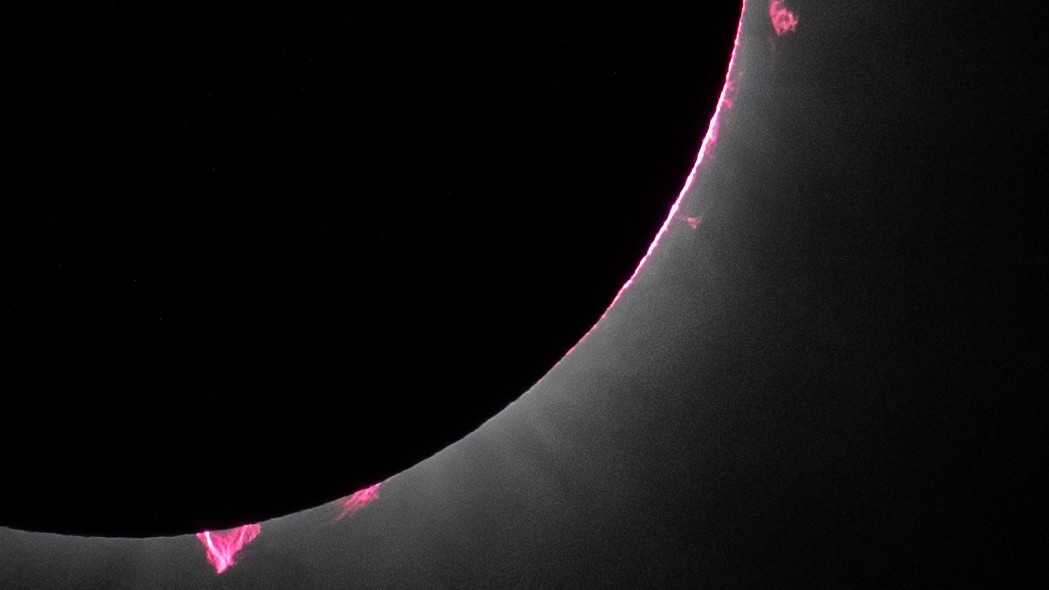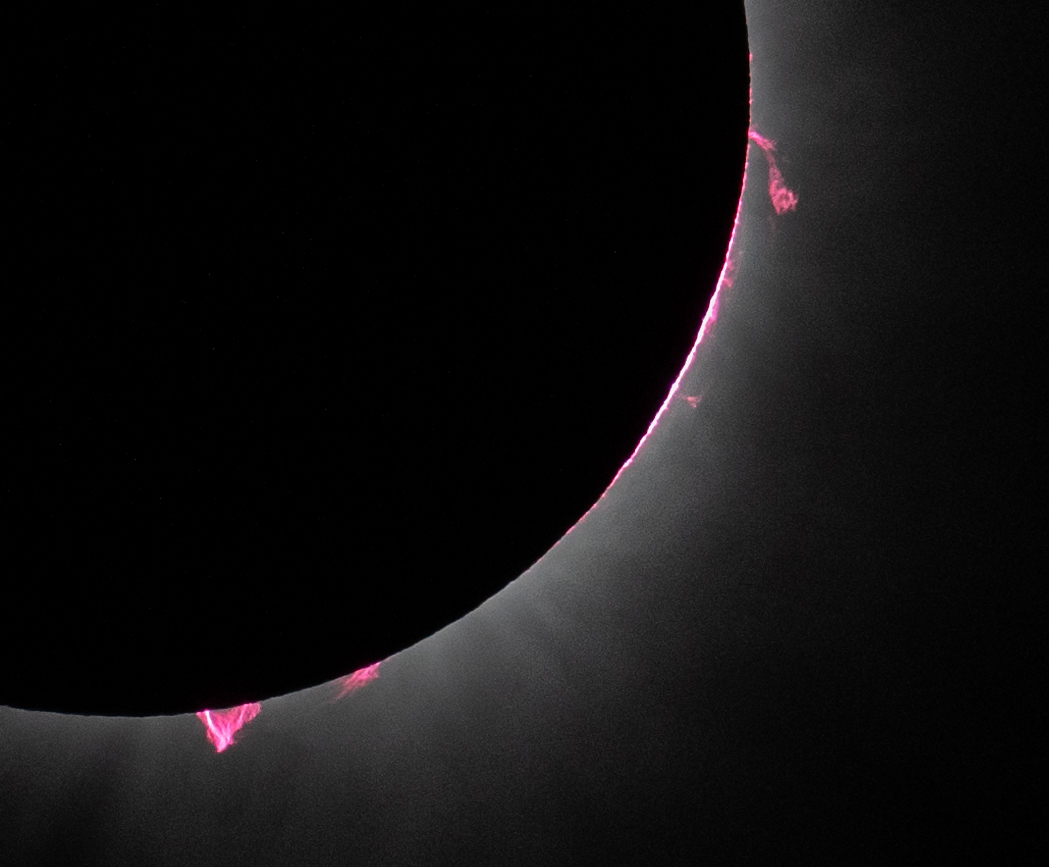
What it is: Towers of plasma (pink) erupting from the sun during a total solar eclipse
Where it is: About 93 million miles (150 million kilometers) above Dallas
When it was taken: April 8, 2024
Why it's so special: On April 8, Earth, the moon and the sun aligned to produce a rare total solar eclipse over North America, plunging parts of Mexico, Canada and 15 U.S. states into surreal daytime darkness.
In this surprisingly colorful image, NASA photographer Keegan Barber captured the view of totality — the moment when the moon fully covered the sun's bright face, revealing its elusive outer atmosphere — as seen over Texas. Behind the black disk of the moon, the two outermost layers of the sun's atmosphere stab into the darkness: the white corona and the reddish-pink chromosphere. Both layers are normally invisible to the human eye.

Related: When is the next total solar eclipse after 2024 in North America?
Many stunning photos of the eclipse have already been shared, but a field of pink structures popping out of the sun like cherry blossoms sets this image apart. Despite what some excited eclipse viewers have claimed, those are not solar flares. But they are an equally impressive phenomenon, known as solar prominences — large, often looping towers of plasma that leap out of the sun's surface and stand anchored there for weeks or months at a time, according to NASA. (Flares, on the other hand, fly off into space within seconds.)
The fact that we can see these prominences from nearly 100 million miles (160 million km) away speaks to their incredible size. Many prominences stand taller than our planet's 7,900-mile (12,700 km) diameter; some truly gargantuan specimens stand taller than eight Earths stacked atop each other. Their pinkish hue in this photo comes from the sun's hydrogen, which emits a reddish light at high temperatures.
Prominences showing their faces in the afternoon are just one of the many beautiful and elusive phenomena visible during a total solar eclipse. If you didn't get to experience this one in person, check out our full report of the many strange things we observed during totality.







